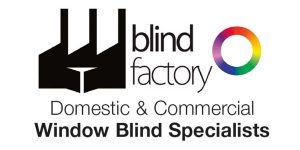The worst economic climate since the second world war has sparked an unexpected entrepreneurial boom, with recent figures indicating a significant increase in the creation of businesses every day. The majority of such businesses are being run from spare bedrooms and attics, and they are being fuelled by redundancy payments and the possibility of launching services over the internet.
- Regardless of the form the business is to take, business owners are advised to address the following matters:
- Register for tax with HMRC;
- Check the relevant regulations with the local Council;
- Set up a business bank account;
- Arrange appropriate insurance cover;
and - Regardless of the size of your business, the nature of the goods it supplies or the services it provides, your business will require a brand or trading name.
- A brand describes the personality of a product, service or company, and in its broadest sense, a brand will consist of a collection of intangible values as perceived by a customer which are attributed to a distinctive name, a logo or symbol, which immediately identifies the brand within its particular market. A brand may incorporate a slogan or strap line, or a well-defined form of packaging, jingle or even scent.
- The importance of a trading name to every start-up means that it is vital that appropriate due-diligence is undertaken to ensure that your chosen brand does not infringe any earlier trading name. Check the Trade Mark Register to ensure that nobody has already registered your brand name or trade mark.
All these things collectively are referred to as intellectual property (IP).
somethings to consider
Name: Strive for simple, memorable and catchy, but always distinctive. Check Companies House register to see if it is available. Plus, make sure your desired domain name (website address) is available.
Logo: Memorable | Simple | Timeless | Versatile | Appropriate | Original. How many formats and sizes do you need the logo to work with for both print and digital? If it is too fussy, it may not be suitable for an App Button. You should always have a version of your logo which will work in black and white and in a square format.
Colours: Will the colours work, do they reflect the objectives and style of your business?
Fonts: Should your fonts say funky or serious?
Imagery: How will your imagery reflect the service you are providing whilst staying on brand?
Voice and tone: The way that we write and speak is a important. You need to know who your target audience are to know how to speak to them. Will you need a chatty approach or a more professional voice. A simple example of this would be how you start an email. There’s a big difference between ‘Hi’ and ‘Dear’.
A well-built brand identity should showcase your business’s values. Whenever you create anything for the brand it should use your brand’s name, logo, colours, fonts, imagery and tone of voice to increase brand awareness. This brand awareness will ensure that you are remembered when a customer needs a service or product that you can provide.


























































